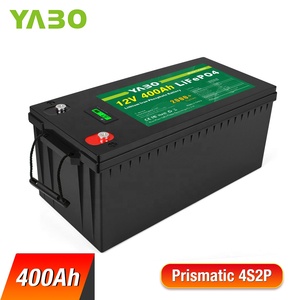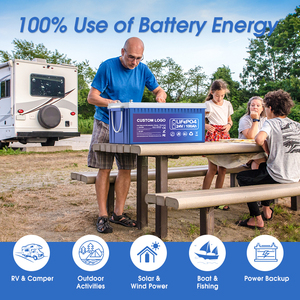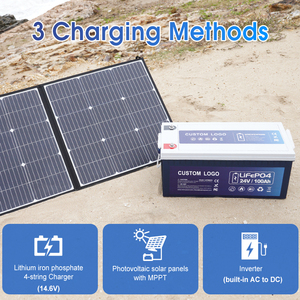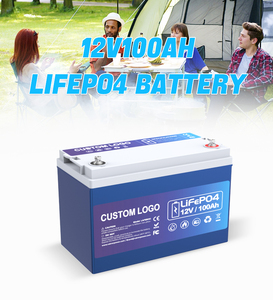
All categories
Featured selections
Trade Assurance
Buyer Central
Help Center
Get the app
Become a supplier

(35415 products available)














































A 200ah 12V inverter battery is viewed as an excellent option for people who want an uninterrupted power supply and need to connect a lot of things at the same time. These batteries come in different types – all of which use various methods and, therefore, are suitable for different situations.
Lead-acid battery: These battery types have been around for quite a long time, as they are one of the very first batteries to have been constructed. This battery consists of lead plates and sulfuric acid solutions. These batteries are normally very cheap, but they do require a lot of maintenance, and their running efficiency is not all that good.
Gel batteries: This is a kind of lead-acid battery, where the electrolyte is made into a jelly-like texture. Because of this, it is more resistant to environmental damage than its liquid predecessors. Because of this, gel batteries are suited for areas with extreme temperatures and, therefore, require less maintenance.
AGM (Absorbent Glass Mat) batteries: These are also a type of lead-acid battery whereby the electrolyte is absorbed into glass mats. They are more resistant to shocks and vibrations compared to gel batteries. Moreover, they can be installed in a variety of positions other than vertical. AGM batteries are powerfully charged and used, but their costs are higher than that of ordinary lead-acid batteries.
Lithium iron phosphate batteries: These batteries are constructed with lithium and iron compounds as the cathode and graphite as the anode. They are relatively new with a longer lifecycle and higher efficiency. They are lightweight and compact, making them convenient for space-limited areas. However, lithium batteries are expensive and may not be affordable to many.
Inverter battery specifications and maintenance are important considerations in ensuring good battery performance in the long run.
Important technical features, such as capacity, power rating, input and output voltages, and frequency, need to be compatible with each other's systems for an inverter to run properly. Features such as energy storage density, peak discharge capacity, and battery type (AGM battery or gel battery), shape, and measurements should be considered when selecting a battery. The 200Ah inverter battery should deliver 12 volts. At this point, one amp hour, the battery will provide one hour of power at 200 amps, hence why it is referred to as 200AH. This number simply means that the battery can deliver 200 amperes for 1 hour or 20 amperes for 10 hours. This makes this battery very desirable for many home appliances, making it good overall for heavy usage.
Without proper and timely maintenance, no matter how powerful a battery is, it will eventually fail before its time. Batteries today are more or less maintenance-free; for instance, AGM and gel batteries are always expected to be sealed and not to require servicing. Nevertheless, some batteries are still the traditional kind, requiring topping up with liquid. All battery types require regular cleaning of terminals for optimal connectivity, and every battery needs to be examined for physical signs of wear and tear to check if it still holds its charge. In addition, batteries need to be protected from extreme temperatures since this may lead to reduced capacity. It is important never to let a battery run down completely, as this causes bad sulfation on lead-acid and lithium batteries, making them fade. Charging them should be done systematically so that their state of health is maintained as much as possible. When a battery reaches its end life, it should also be disposed of in a way that is environmentally friendly, as some of its components are hazardous.
These durable batteries are excellent for various uses in homes, especially in bad weather areas. They can back up power during an outage or serve areas far from electrical lines. Because they can be charged with solar systems, they offer a green backup during storms.
For homes, a 200Ah battery works well with multiple needs, such as keeping lights, TVs, and computers on during outages while simultaneously allowing electrical appliances that use up high wattage to run concurrently. It can power a refrigerator to keep groceries fresh, medical equipment for health monitoring, or even a home workspace for business continuity. The compact size of the battery means it can be fitted in small spaces such as closets or utility rooms. Because of their reliability and convenience, many families choose to install them.
Users who live in remote rural areas, where the nearest power lines could be over two miles away, rely on these batteries as the primary source of power. They can be paired with generators to provide continuous electricity to power household appliances such as water pumps, heating systems, or agricultural equipment. Due to their durability, they are mounted in tough enclosures to withstand extreme weather conditions and keep them inaccessible, secure, and safe.
In camping or off-road situations, lithium-ion batteries provide a portable power solution for running lighting, refrigeration, and electronic devices such as cell phones and laptops. The batteries are mounted in trailers or camper vans with compact designs that leave ample living space. Their long lifecycle makes them an eco-conscious choice for those regularly exploring the outdoors.
Batteries are vital for emergency response vehicles to operate equipment. They power communication systems, medical equipment, and lights while the vehicle is stationary. With durable construction, they withstand the rough terrain and long usage hours during emergencies. The compact battery design allows efficient space utilization within the vehicle.
Buoys and towers in the ocean use 200Ah batteries to demonstrate a solar panel, making the hardware in the water system extremely reliable. They power communication systems, sensors, and monitoring devices essential for ocean research or maritime navigation. Due to high energy density, batteries fit within small enclosures, leaving some operational space for other equipment. Their robust build enables continuous performance in rough marine environments.
Choosing the right battery means considering needs, budget, and personal preferences. Each battery type has its strong and weak points, meaning all would make a good choice in certain situations while compromising somewhere else. The lead-acid or lithium-ion battery type, in this case, is a question of cost and what is affordable - while lead-acid batteries are the cheaper option, they cannot be compared with technologically advanced and more expensive lithium-ion batteries, which offer better benefits like easy installation and a long life. Since gel and AGM batteries offer the convenience of being maintenance-free, they are good for people wanting to avoid such activities.
Space constraints have to be considered as well when picking a battery. While a lead-acid battery will take up more space due to its design, the AGM and lithium-ion options are slimmer and design-friendly. Costs are an important factor in choosing a battery. Mainly, while lead-acid batteries are cheaper, they require maintenance and have a small lifespan. In contrast, lithium-ion batteries are costly but offer a high performance with low maintenance. The budget is also one more important area to consider when making choices between lithium-ion, AGM, gel, and lead-acid batteries, which are the least expensive yet financially viable opportunities. Knowing all these factors can help people pick the right battery type for their specific requirements.
A1: The battery's 200 Ah capacity means it can deliver 200 Amps for one hour at 12 volts. Hence, the longer period means more appliances can be powered simultaneously.
A2: Lead-acid, gel (a type of lead-acid), AGM, and lithium-ion phosphate batteries are ideal for inverters due to their stored energy densities and compatibility with inverter charging profiles.
A3: Lithium-ion phosphate batteries, like the 12V 200Ah one, are safe and rechargeable, particularly for solar power usage because of their longer lifespan and better charge and discharge rates.
A4: A 12V lithium-ion phosphate battery is suitable for small electric vehicle charging systems, although larger batteries or different voltage systems would be needed for full-scale home EV charging.